In 2009, 4G LTE networks rolled out in Stockholm and Oslo, replacing 3G as a better upgrade to the mobile data technology that gives us the broadband speeds we have on our mobile devices. Over a decade later, and we have the latest, next-generation wireless network technology among us, 5G, but can you even use it?
New 5G networks will make your life a whole lot better, with faster downloads, improved upload speeds, and decreased latency (the delay between devices). Some mobile phones are already equipped to handle 5G signals, but not everyone can take advantage of the increased speeds. Depending on your wireless carrier, you may have 5G in your area, in a nearby city, or the next state over.
Before we get to where all the 5G networks are available right now, let's go over the basics of 5G, what the benefits are, and how it differs from carrier to carrier.
What You Need to Know About 5G
Unlike 4G, 5G works on three different types of radio signals to deliver cellular service to supported devices: low-band, mid-band, and high-band spectrum (the most important for speed). Each band works together to form a complete network to provide faster speeds:
- Low-band: Covers the most area, but with the slowest speeds.
- Mid-band: Covers less area, but with faster speeds.
- High-band: Covers the least area, but with the fastest speeds.
If you live or work in areas where there is high-band spectrum, also known as mmWave, you'll get faster download speeds, virtually zero latency, and better bandwidth. That means the network can handle more devices at once, so you'll have better service even in crowded areas like music festivals.
However, the coverage area for the high-band spectrum is low, and the high frequencies have a difficult time penetrating buildings. But between the three different bands, it should offer all-around better service to everyone across the country and the world.
As for speeds, you should expect the fastest 5G network to be at least ten times faster than 4G LTE, but those numbers could balloon up when the technology improves, making it 100 times faster. If you need a real-world example, that means you could potentially download an entire high-definition film in just a few seconds.
To connect to the 5G network, though, you'll need to have a 5G-compatible smartphone and live in an area where 5G is available. There are already several smartphones that support 5G, including the OnePlus 7 Pro 5G, OnePlus 8 Pro, Samsung Galaxy S20 Ultra 5G, Samsung Galaxy S10 5G, and Samsung Galaxy Note 10+ 5G. Apple hasn't released a 5G-capable iPhone yet but is expected to later this year if all goes well.
Where Is 5G Available?
If you happen to have a 5G smartphone already or are looking forward to owning one soon, you may be wondering if your carrier offers 5G in your area. Below, you'll find several popular wireless service providers and their various 5G network maps.
However, not all companies show complete nationwide coverage maps for 5G service. Carriers have resisted in providing completed 5G broadband maps because it's a "still-nascent technology" and it "could reveal sensitive information about cell site locations and even customer locations."
1. Verizon Wireless
Out of all the carriers on this list, Verizon Wireless has the worst 5G coverage available in the United States, offering its 5G Ultra Wideband in only 34 cities, with San Diego soon to be the 35th.
Because Verizon is focused solely on the high-band spectrum, the signal doesn't travel far and has trouble getting into buildings, but when it does, it's blistering fast. In Los Angeles, 5G coverage is available in only .04% of the city, but the maximum speeds can get up to 627 Mbps. And just recently, Verizon turned on 5G coverage for uploads, which had been on LTE for the last few months.
Verizon doesn't offer a nationwide 5G coverage map yet. It doesn't even have full state maps. Instead, it splits the 34 cities up into regions and neighborhoods. In each of those areas, you'll see exactly who has access to 5G speeds with famous landmarks marked for clarity. You can see all of the cities supported on its website. Select one to view the regions that have and don't have 5G. Then, pick an area to see the detailed view, and you'll notice that 5G mostly hugs the streets.
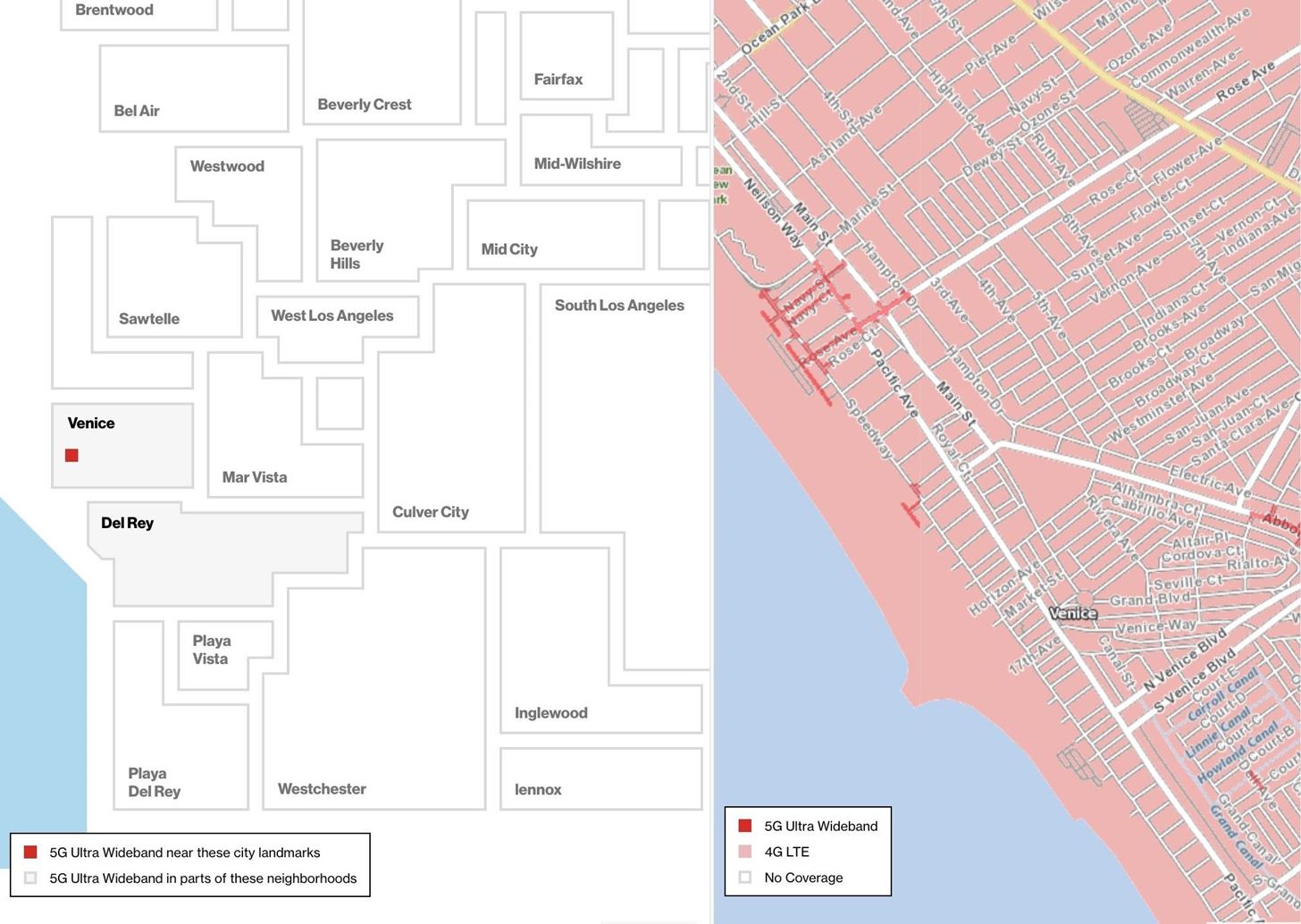
Supported States:
As of May 2020, these are the places where you can use Verizon's 5G service.
- Arizona (Phoenix)
- Arkansas (Little Rock)
- California (Los Angeles (coming soon: San Diego))
- Colorado (Denver)
- Florida (Miami, Panama City)
- Georgia (Atlanta)
- Idaho (Boise)
- Illinois (Chicago)
- Indiana (Indianapolis)
- Iowa (Des Moine)
- Massachusetts (Boston)
- Michigan (Detroit, Grand Rapids)
- Minnesota (Minneapolis, St. Paul)
- Missouri (Kansas City)
- Nebraska (Omaha)
- New Jersey (Hoboken)
- New York (New York City)
- North Carolina (Charlotte, Greensboro)
- Ohio (Cincinnati, Cleveland, Columbus)
- Rhode Island (Providence)
- South Dakota (Sioux Falls)
- Tennessee (Memphis)
- Texas (Dallas, Houston)
- Utah (Salt Lake City)
- Virginia (Hampton Roads)
- Washington (Spokane)
- Washington D.C.
2. T-Mobile, Metro by T-Mobile, Sprint
T-Mobile has the best coverage out of all the carriers on the list. It's available in every US state except Alaska, and some areas of Puerto Rico are covered as well. However, it has slower speeds than several of its competitors because it works solely in the low-band spectrum.
In Los Angeles, T-Mobile 5G tops out at 159 Mbps, which is only slightly faster than 4G, but it's available across nearly 40% of the city. If you have Metro by T-Mobile, you'll have the same 5G coverage, but at potentially slower speeds because T-Mobile prioritizes its primary customers. Sprint, which was recently acquired by T-Mobile, has its own setup for 5G (it works in the mid-band spectrum), but that will soon be merged with T-Mobile's to offer a faster and wider reaching network.
Unlike Verizon, T-Mobile does offer a nationwide map for 5G. You can enter a city or state in the search box to jump right to that area, or you can just browse by zooming in and out and scrolling.

Supported States:
Too many to list since it's available in 5,000 cities to over 200 million people. The map above gives you a good idea of where it's at. However, T-Mobile does have some mmWave 5G speeds in the following places, as of May 2020.
- California (Los Angeles)
- Florida (Miami)
- Georgia (Atlanta)
- Nevada (Las Vegas)
- New York (New York City)
- Ohio (Cleveland)
- Texas (Dallas)
3. AT&T
AT&T has faster 5G than most carriers except Verizon, and it's in the middle when it comes to coverage. Using Los Angeles as an example, AT&T's 5G (working on the low-band spectrum) has a maximum speed of 345 Mbps and is available in over 7% of the city, which isn't great but is much better than Verizon's coverage. AT&T has been selling a 5G E (5G Evolution) service, but this is simply a marketing term for a faster version of its 4G LTE network.
However, AT&T also has Mobile 5G+, which works on the high-band spectrum and provides peak speeds of more than 2 Gbps. Previously, it was only available to specific business customers, but now it's available to everyone, albeit in a limited capacity, in 35 cities.
Like Verizon, AT&T doesn't have a detailed nationwide coverage map for its 5G networks. When you visit the site, you select a state, which opens up a PDF with all of the regions that have 5G Evolution and 5G+, though, it will not distinguish between the two. There is also an interactive map you can use to find coverage in specific areas of the US.


Supported States:
As you can see in the above nationwide map, AT&T has 5G Evolution coverage in all US states except Maine and Nebraska. However, AT&T's Mobile 5G+ is available in the following 35 cities. The maps and cities below are current as of May 2020.
- Arizona (Phoenix)
- California (Los Angeles, Menlo Park, Oakland, Redwood City, San Bruno, San Diego, San Francisco, San Jose, West Hollywood)
- Florida (Jacksonville, Miami, Miami Gardens, Orlando)
- Georgia (Atlanta)
- Indiana (Indianapolis)
- Kentucky (Louisville)
- Louisiana (New Orleans)
- Maryland (Baltimore, Ocean City)
- Michigan (Detroit)
- Nevada (Las Vegas)
- New York (New York City)
- North Carolina (Charlotte, Raleigh)
- Ohio (Cleveland)
- Oklahoma (Oklahoma City)
- Pennsylvania (King of Prussia, Philadelphia)
- Tennessee (Nashville)
- Texas (Austin, Dallas, Houston, San Antonio, Waco)
Just updated your iPhone? You'll find new emoji, enhanced security, podcast transcripts, Apple Cash virtual numbers, and other useful features. There are even new additions hidden within Safari. Find out what's new and changed on your iPhone with the iOS 17.4 update.
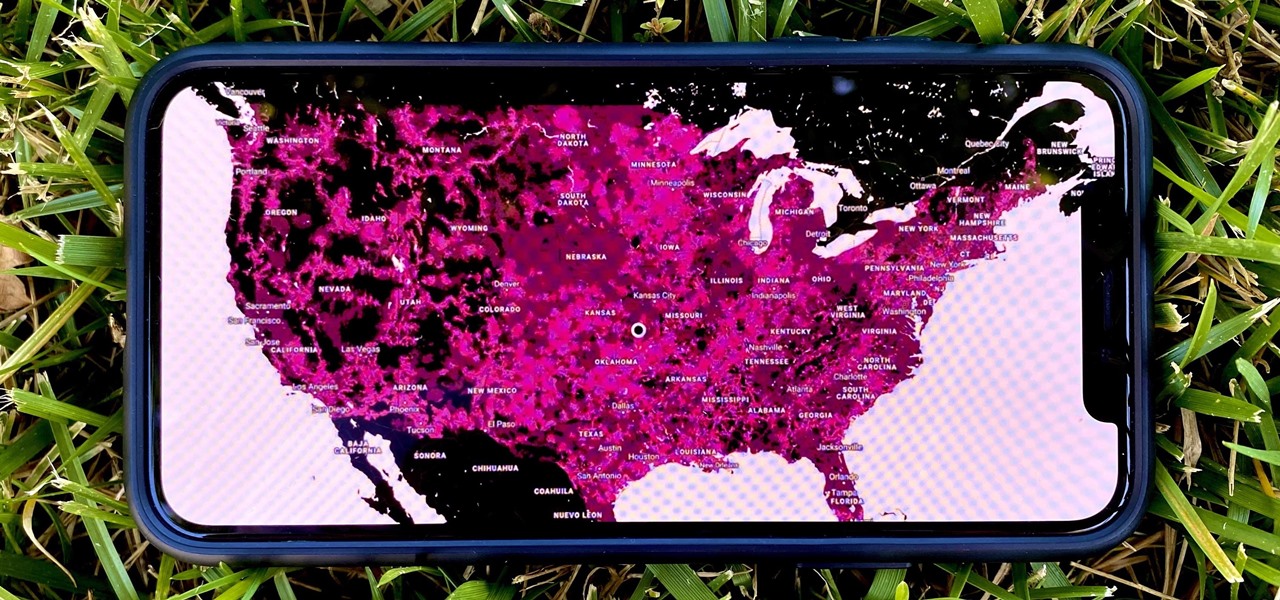




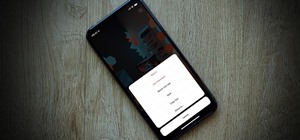
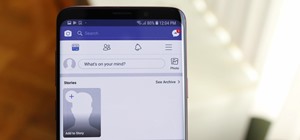

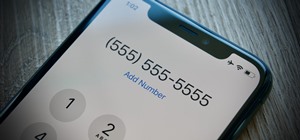




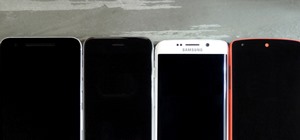

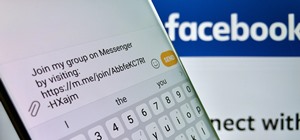

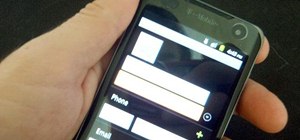
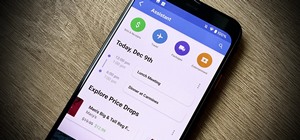


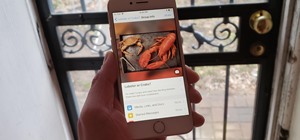
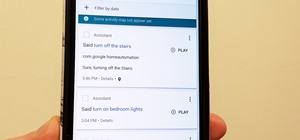
Be the First to Comment
Share Your Thoughts